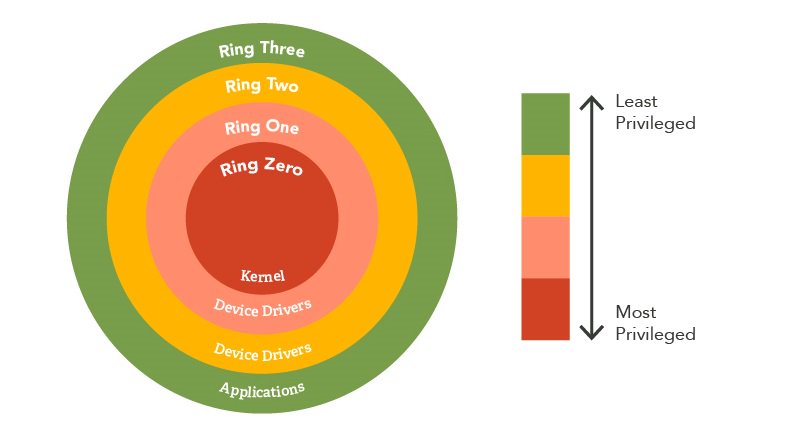5 Trends for Industry 4.0: The Factory of the Future

The growing complexity of machine software as well as the ongoing modularization
of modern production equipment has led to more simulation upfront. The fact that
international travel for commissioning or service has significantly reduced or
in some cases halted these days reinforces this trend. Functional tests of
production equipment of the future will be performed using comprehensive models
for simulation and virtual commissioning. The factory of the future will be
built twice—first virtually, then physically. Digital representations of
production machines continuously fed with live data from the field will be used
for health monitoring throughout the entire lifetime of the equipment and will
eventually make onsite missions be an exception ... Flexible production in the
factory of the future will require robots and autonomous handling systems to
adapt faster to changing requirements. While classic programming and teaching of
robots isn’t suitable for preparing the system to handle the huge and
fast-growing number of different goods, future handling equipment will
automatically learn through reinforcement learning and other AI techniques. The
prerequisites—massive calculation power and huge amounts of data—have been
established over the past years.
Runtime data no longer has to be vulnerable data
With all of these security advantages, you might think that CISOs would have
quickly moved to protect their applications and data by implementing secure
enclaves. But market adoption has been limited by a number of factors. First,
using the secure enclave protection hardware requires a different instruction
set, and applications must be re-written and recompiled to work. Each of the
different proprietary implementations of enclave-enabling technologies requires
its own re-write. In most cases, enterprise IT organizations can’t afford to
stop and port their applications, and they certainly can’t afford to port them
to four different platforms. In the case of legacy or commercial off-the-shelf
software, rewriting applications is not even an option. While secure enclave
technologies do a great job protecting memory, they don’t cover storage and
network communications – resources upon which most applications depend. Another
limiting factor has been the lack of market awareness. Server vendors and cloud
providers have quickly embraced the new technology, but most IT organizations
still may not know about them.
Liquid Neural Network: What’s A Worm Got To Do With It?

Liquid networks make the model more robust by improving its resilience to
unexpected and noisy data. For instance, it can make algorithms adjust to
heavy rains that obscure a self-driving car’s vision. Liquid network makes the
algorithm more interpretable. The network can help overcome the machine
learning algorithms’ black-box nature because of the neurons’ expressive
nature. The liquid network has performed better than other state-of-the-art
time series by a few percentage points to predict future values in datasets
used in atmospheric chemistry and traffic patterns. Apart from the high
reliability, it also helped reduce computational costs. The researchers were
aiming for fewer but richer nodes in the algorithm. In other words, the study
focused on scaling down the network rather than scaling up. “This is a way
forward for the future of robot control, natural language processing, video
processing — any form of time series data processing,” said Ramin Hasani, the
paper’s lead author. ... Tremendous progress has been made in developing smart
bots that can perform multiple intelligent tasks like work alongside humans or
give mental health advice. However, its adoption presents a significant
concern in terms of safety and ethics.
Virtual Panel: The MicroProfile Influence on Microservices Frameworks
The term cloud-native is still a large gray area and it's concept is still
under discussion. If you, for example, read ten articles and books on the
subject, all these materials will describe a different concept. However, what
these concepts have in common is the same objective - get the most out of
technologies within the cloud computing model. MicroProfile popularized this
discussion and created a place for companies and communities to bring
successful and unsuccessful cases. In addition, it promotes good practices
with APIs, such as MicroProfile Config and the third factor of The
Twelve-Factor App. ... The use of reflection by the frameworks has its
trade-offs. For example, at the application start and in-memory consumption,
the framework usually invokes the inner class ReflectionData within
Class.java. It is instantiated as type SoftReference, which demands a certain
time to leave the memory. So, I feel that in the future, some frameworks will
generate metadata with reflection and other frameworks will generate this type
of information at compile time like the Annotation Processing API or similar.
We can see this kind of evolution already happening in CDI Lite, for
example.
General Availability of the new PnP Framework library for automating SharePoint Online operations

Overtime the classic PnP Sites Core has grown into a hard to maintain code
base which made us decide to start a major upgrade effort for all PnP .NET
components. As a result of that, PnP Framework is a slimmed down version of
PnP Sites Core dropping legacy pieces and dropping support for on-premises
SharePoint in favor of improved quality and maintainability. If you’re still
using PnP Sites Core with your on-premises SharePoint than that’s perfectly
fine, we’re not going to pull these components but you’ll not see any updated
versions going forward. PnP Framework is a first milestone in the upgrade of
the PnP .NET components, in parallel we’re building a brand new PnP Core SDK
using modern .NET development techniques focused on performance and quality
(check our test coverage and documentation). Overtime we’ll implement more and
more of the PnP Framework functionality in PnP Core SDK and then replace the
internal implementation in PnP Framework. The modern pages API is good
example: when you use that API in PnP Framework you’re actually using the
implementation done in PnP Core SDK. Below picture gives an overview of our
journey and the road ahead:
Endpoint Detection and Response: How Hackers Have Evolved

While kernel mode is the most elevated type of access, it does come with
several drawbacks that complicate EDR effectiveness. In kernel mode,
visibility can be quite limited as there are several data points only
available in user mode. Also, third-party kernel-based drivers are often
difficult to develop and if not properly vetted can lead to higher chances of
system instability. The kernel is often regarded as the most fragile part of a
system and any panics or errors in kernel mode code can cause huge problems,
even crashing the system entirely. User mode is often more appealing to
attackers as it has no way of directly accessing the underlying hardware. Code
that runs in user mode must use API functions that interact with the hardware
on behalf of the application, allowing for more stability and fewer
system-wide crashes (as application crashes will not affect the system). As a
result, applications that run in user mode need minimal privileges and are
more stable. Suffice to say, a lot of EDR products rely heavily on user mode
hooks over kernel mode, making things interesting for attackers. Since the
hooks exist in user mode and hook into our processes, we have control over
them. Since applications run within the user’s context, this means everything
that's loaded into our process can be manipulated by the user in some form or
another.
Continuous Delivery: Why You Need It and How to Get Started

For decades, enterprise software providers have focused on delivering large
quarterly releases. "This system is slow because if there are any bugs in such
a large release, developers have to sift through the deployed update in its
entirety to find the problem to patch," said Eric Johnson, executive vice
president of engineering for open-source code collaboration platform provider
GitLab. Enterprises committed to CD rapidly deliver a string of highly
granular releases. "This way, if there are any bugs in a new individual
release they’re easily and swiftly addressed by developers' teams. Most
developers appreciate CD because it helps them deliver higher quality work
while limiting the risk of introducing unwanted change into production
environments. CD ensures that the entire software delivery lifecycle from
source control, to building and testing, to artifact release, and ultimately
deployment into real environments, is automated and consistent, explained
Brent Austin, director of engineering at Liberty Mutual Insurance. High levels
of test automation are critical in CD, allowing developers to confidently
introduce changes quickly with high confidence and higher quality. "CD also
helps developers think in small batch sizes, which allows for easier and more
effective rollback scenarios when issues are found and makes introducing
change safer," Austin said.
Interview With a Russian Cybercriminal
Interacting with a ransomware operator is "unusual, but not that unusual,"
says Craig Williams, director of outreach for Cisco Talos. Of course, a key
challenge in chatting with a criminal is knowing when to trust them.
Researchers asked many questions they were able to verify, but there were
scenarios in which they felt Aleks wasn't telling the whole story. Williams
says the strongest example of this related to targeting the healthcare
industry. "He pointed out how he didn't target healthcare customers … but then
knew an awful lot about when healthcare paid, and in what situations they
paid, and what type of data they have, and exactly how valuable it would be,
and if they had insurance, they were more likely to pay," he explains. For
example, Aleks reportedly told researchers hospitals pay 80% to 90% of the
time. Aleks seems to choose victims based on their ability to pay quickly,
Williams says, though the report notes the attacker's views may not represent
those of LockBit group. For example, Aleks says the EU's General Data
Protection Regulation (GDPR) may work in adversaries' favor. Victim companies
are more likely to pay "quickly and quietly" so as to avoid penalties under
GDPR.
The most important skills for successful AI deployments

As AI has bolstered the operations of more and more sectors, it’s become
apparent that knowledge of the technology alone isn’t enough for deployments
to succeed. Whether the AI solution is serving companies or individuals, the
engineers behind the roll-out need to understand the business at hand. “The
company needs people who know the principles of how these algorithms work, and
how to train the machine, but can also understand the business domain and
sector,” said Sanz-Saiz. Without this understanding, training an algorithm can
be more complex. Any successful data scientist not only needs to bring
technical expertise, but also needs to have domain and sector expertise as
well.” Without sufficient industry knowledge, decision-making can become
inaccurate, and in some cases, such as healthcare, it can also be dangerous.
Companies such as Kheiron Medical have been using an AI solution to transform
cancer screening, accelerating the process and minimising human error. For
this to be effective, careful assessments and evaluations at every stage of
the screening procedure need to be in place. “I think a commitment to clinical
rigour needs to underpin everything that we do,” explained Sarah Kerruish,
chief strategy officer at Kheiron.
Google’s New Approach To AutoML And Why It’s Gaining Traction

AutoML is an automated process of searching for a child program from a search
space to maximise a reward. The researchers broke down the process into a
sequence of symbolic operations. Meaning, a child program is turned into a
symbolic child program. The symbolic program is further hyperified into a
search space by replacing some of the fixed parts with to-be-determined
specifications. During the search, the search space materialises into
different child programs based on search algorithm decisions. It can also be
rewritten into a super-program to apply complex search algorithms such as
efficient NAS (ENAS). PyGlove is a general symbolic programming library on
Python. Using this library, Python classes, as well as functions, can be made
mutable through brief Python annotations, making it easier to write AutoML
programs. The library also allows AutoML techniques to be quickly dropped into
preexisting machine learning pipelines while benefiting open-ended research
which requires extreme flexibility. PyGlove implements various popular search
algorithms, such as PPO, Regularised Evolution and Random Search.
Quote for the day:
"If you can't handle others'
disapproval, then leadership isn't for you." --
Miles Anthony Smith
No comments:
Post a Comment